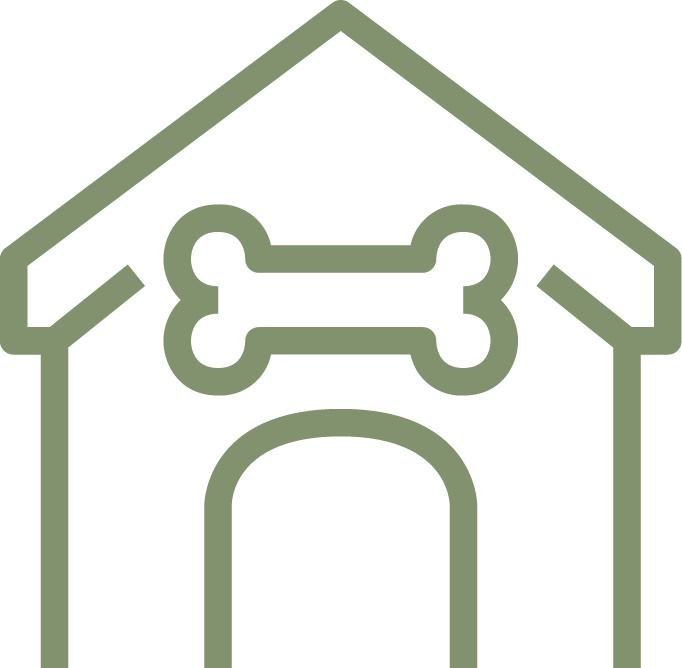How to Make a Vet Visit Less Stressful For Your Dog
The importance of the annual or semi-annual vet visit for your dog cannot be overrated. Since dogs can’t speak, these vet visits are the key to maintaining your dog’s health. But, let’s face it… Getting poked and prodded isn’t exactly something anyone looks forward to, including your dog. Here’s how to make a vet visit less stressful for your dog.
Are Vet Visits Really Important?
Yes. And, while I could end it there, I’ll expand a bit. Some people think that if a dog isn’t showing signs of ill health, that skipping the annual vet visit is no big deal. But unlike humans, dogs can’t tell you what ails them. That’s one reason why we must maintain routine vet visits. Plus, your dog’s vitals can change fairly fast. So lab work is extremely important in pets.
Don’t wait until your dog falls sick before taking him or her to the vet. A routine vet visit has a lot of positive health benefits. Not only do they help ensure the longevity of your pet’s life, but they can also give you insight into things that may not seem like a big deal… But that can be dangerous to your dog. Like deer droppings. We see it as… Well, poop. But dogs sniff it and can get transferred illnesses. I wouldn’t have known that, except for a vet visit early in my dog mom life.
What Should Be Included in an Annual Vet Visit?
Eyes
The vet checks a dog’s vision to see whether there are signs of illness such as glaucoma, cataracts or corneal ulcers. These conditions, if not detected or treated early, can lead to pain, momentary or permanent blindness, and even the loss of an eye.
Mouth and Teeth
The vet checks for signs of gingivitis as well as periodontal disease in the gums and teeth, as well as for oral cancer. If teeth are left untreated, it can lead to pain, tooth decay, abscesses, and tooth loss.
Ears
Ear infections can start very subtly. A vet will check your dog’s ears to make sure they are nice and clear, and even pluck out hairs as needed. Also, signs of ear mites or any other ear-related infections are checked for. If ear issues are not treated early, they can lead to loss of hearing.
Joints
The vet will check for mobility, reflexes, and proper movement in your dog’s joints. This helps detects signs of arthritis, nerve responses, back diseases, hip dysplasia, and other joint issues.
Skin
Dogs can develop lumps and in most cases, they are fatty tumors. However, if they look concerning a vet will order a test to help identify the issue. Early detection of skin disease helps the overall life of your pet.
Temperature
It’s important that your vet check your dog’s temperature at every visit. An elevated temperature is often the first indication that your dog has an infection or is inflamed. The normal body temperature for dogs is between 101 and 102.5 F.
Weight
Just like humans, dogs have an ideal weight range. When your dog’s vet takes his/her weight it helps identify any issues of over or underweight. A heavy dog can develop blood pressure, heart disease, arthritis, etc. And, a dog that is underweight could be a sign that something is not right.
Stethoscope Check
Your vet will listen to your dog’s heart to determine an abnormal heart rate, heart rhythm, and for heart murmurs. Also, she will listen to your dog’s breath sounds to ensure all is well.
Stomach and Lymph Node Palpitations
The vet will feel in your dog over the areas of the bladder, intestines, kidneys, liver, spleen, and stomach to see if they feel normal or abnormal. Also, the vet will check your dog’s stomach and lymph nodes for any evidence of discomfort.
Bowel Movement Sample
Your vet will want you to bring a sample to be microscopically evaluated for the presence of parasite eggs.
Screening Tests
While optional, these tests are important to understanding and tracking the health of your dog. They include a complete blood count (CBC), biochemistry profile, urinalysis, and thyroid hormone testing.
Why Are Dogs Anxious During a Vet Visit?
In a nutshell… It’s not home. And, the person touching your dog is not you. Nothing about a vets office is familiar or inviting to a dog. Also, according to Fear Free Pet’s research, dogs become stressed and anxious when poked and prodded by strangers, examined on an elevated surface, put in a room with white walls and bright lights, and when overhearing other animals barking or in distress. This pretty much describes a lot of vet offices. Most dogs exhibit vet visit anxiety through barking, whining, whimpering, huddling down, diarrhea, drooling, and panting.

Here’s How to Make a Vet Visit Less Stressful For Your Dog
- Socialization. One of the first steps in curbing dog’s anxiety is to help them become socialized with other dogs and people. A dog that sees everyone as a potential friend will better synch with the environment, clinicians, visitors and other animals who are at the vet.
- Car Rides. In some cases, the only time a dog gets to go for a car ride is to go to the vet. Once a dog learns this, it will likely become anxious anytime s/he is in a car, and may even refuse to get into a car. To prevent this, take your dog for a car ride where good things happen. Like to a pet store, a park, lake, or beach. You can even end it by going to the vet for nothing more than a weight check and a treat. This will help build confidence.
- Treats. Dogs love treats! This comes in very handy when you take your pup to the vet. It’s very helpful to use the “reward training” method for your vet visiting pooch. Simply reward your dog with a treat after each successful completion of an examination process.
- Training. A well-trained dog is a happier dog. Training builds confidence and self-assuredness. You can teach your dog the ‘up’ command to get on the weight scale, ‘sit’ for vital checks, and ‘down’ for when the vet wants to look at your pup’s skin. For advanced training, you can teach your dog the ‘look at me’ command. This will help when the vet wants to look at your dog’s ears.
Can CBD Help Make a Vet Visit Less Stressful?
Another helpful tool that can curb your dog’s vet-visit anxiety is CBD. Similar to mood-enhancing drugs (e.g. SSRIs), CBD blocks the reabsorption of serotonin in the brain (source). This helps brain cells transmit more serotonin signals, which can reduce anxiety and boost your dog’s mood. CBD has also been shown to have a hippocampal neurogenesis effect (strengthens and regenerates the hippocampus’ neurons) (source). This is beneficial as studies show that anxiety impacts the hippocampus, making it smaller and less effective.
That’s a boat-load of science to explain that CBD does work with your dog’s body to ease anxiety. Naturally. Just give your dog a CBD treat or tincture 30-60 minutes before visiting the vet. An anxiety-free dog makes for an excellent vet visit. And, you don’t want to miss a semi-annual vet check-up because your dog is anxious. Try some of our tips above, give your dog some CBD, and your visits to the vet should become fairly unremarkable. Which is a good thing!


